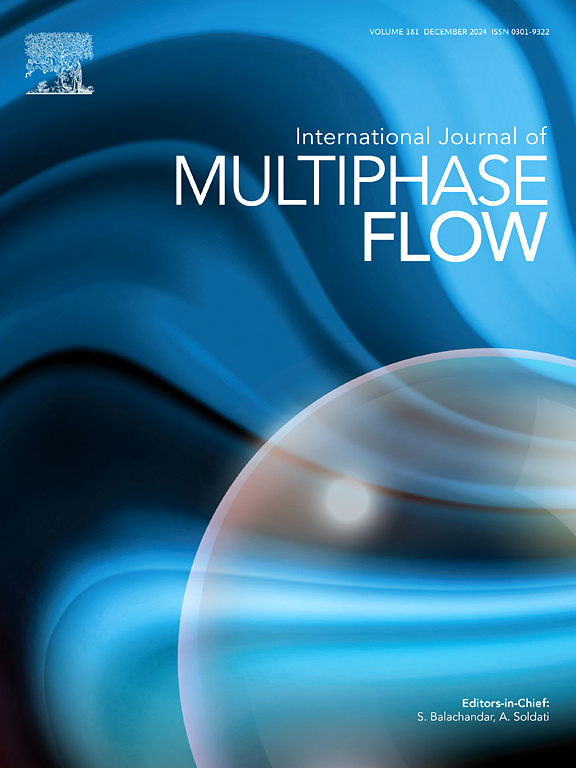Transition to entrainment in downward annular gas-liquid flow: Study through flow control
IF 3.6
2区 工程技术
Q1 MECHANICS
International Journal of Multiphase Flow
Pub Date : 2024-12-17
DOI:10.1016/j.ijmultiphaseflow.2024.105109
引用次数: 0
Abstract
Formation of disturbance waves and entrainment of liquid droplets drastically enhances pressure drop and heat and mass transfer in annular flow. Here we investigate the transition to entrainment by analyzing spatiotemporal records of film thickness in the vicinity of the transition border. Two branches of the border: “vertical”, with high gas speeds and low liquid flow rates, and “horizontal”, with low gas speeds and large liquid flow rates, are analyzed separately. In both cases, low-frequency pulsations of liquid flow rate are applied in attempt to expand the regime area of entrainment and learn more about the transition. It was found that two conditions are necessary for creation of a disturbance wave: strong localized perturbations able to create the initial hump of liquid and enough spare liquid in excess of the viscous sub-layer to fill and maintain this hump. Below the “vertical” branch, the disturbance waves do not occur due to lack of spare liquid. Below the “horizontal” branch, no sources of strong perturbations are present. Both “vertical” and “horizontal” branches can be shifted towards lower values of liquid flow rate and gas speed, respectively, using low-frequency oscillations of liquid flow rate. However, the mechanisms of creating these artificial disturbance waves are different. For “vertical” branch, the pulsations create patches of larger liquid flow rate, where disturbance waves can be created in a “natural” manner. For “horizontal” branch, each pulsation period creates a single disturbance wave, provided that the excitation frequency belongs to appropriate range.

求助全文
约1分钟内获得全文
求助全文
来源期刊
CiteScore
7.30
自引率
10.50%
发文量
244
审稿时长
4 months
期刊介绍:
The International Journal of Multiphase Flow publishes analytical, numerical and experimental articles of lasting interest. The scope of the journal includes all aspects of mass, momentum and energy exchange phenomena among different phases such as occur in disperse flows, gas–liquid and liquid–liquid flows, flows in porous media, boiling, granular flows and others.
The journal publishes full papers, brief communications and conference announcements.

 求助内容:
求助内容: 应助结果提醒方式:
应助结果提醒方式:


